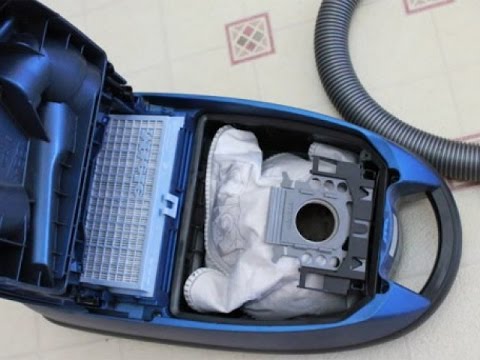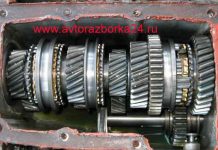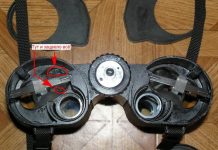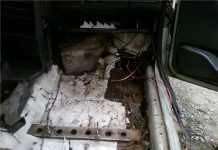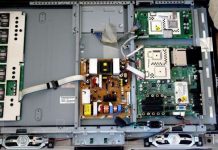Regardless of the type of vacuum cleaner, the heart is called the engine. Television programs like to depict the creation of a vacuum, which, in our opinion, is an inept manipulation of words. The motor draws in air by the blade, the filter keeps the moving parts from dust. Each bearing is equipped with an insert for this purpose. The engine has no protection from vacuum ... Do-it-yourself repair of a vacuum cleaner is advisable when the heart of the device is functioning properly, there is a need to replace, modify the brushes, lubricate the bearings. It is charming that the devices are similar from the inside, like two drops of water. The mechanical part, the device for collecting dust, filters, brushes, hoses, housings vary. Accessories are an essential part of the appliance. The device of the vacuum cleaner, the basic idea remains the same!
The heart of the vacuum cleaner is rightly called a motor, traditionally a collector motor. Let's take a quick look at the design of an irreplaceable product and create a clear idea. In an asynchronous motor, a rotating field is created by correctly distributing the phases by the windings, the winding collector commutes in series. There are unpopular exceptions. The direction of movement is determined by the direction of engagement:
As for the question why the rotor turns exactly in this direction, not opposite when connecting the windings unidirectionally, the answer is revealed by the mutual arrangement of the brushes and stator coils, the structure of the collector. The number of coils is wound on the armature, equal to the number of contact pads of the shaft. The brushes feed a single winding at a time. Then the shaft rotates a certain angular distance, the next coil is energized. One revolution passes, the cycle begins anew.
Imagine the stator pole (so far only one - not two), located at the bottom. Suppose, at the initial moment of time, the brushes are set so that the armature pole is fed to the left of the building axis. Then, due to repulsion, the shaft begins to describe the hour hand. The axis passes the angular distance, the current begins to flow around the next winding, which managed to take the place of the previous one. This happens as long as the current exists. And there is no difference, constant or variable. The collector motor will run driven by the direction of the field. The speed of rotation is not determined by the frequency - by the design of the mechanical part, by the magnitude of the voltage.
Now if the fields are attracted, the rotation will start counterclockwise. By the time the stator and rotor poles become opposite each other, the power will be transferred to the next coil, which will begin to create the required force. The cycle is circular. Now the coils. Brush motors are equipped with a pair of stator windings for direct current, because the alternating current encounters too much resistance from the inductors. This is why some brushed motors are designed with separate stator leads. It will allow you to use one instead of two windings. It is clear that the load capacity drops significantly. But losses are decreasing.
In a vacuum cleaner on the motor stator, we notice two diametrically opposite windings that help each other. Mutually beneficial coexistence is ensured by the correct direction of inclusion (wrote above). Reversing motors have a special power relay that switches the poles in proper order. For comparison, in an induction motor, a similar relay distributes the voltage phases in a different way. It turns out a reverse. The collector motor does not require a starting winding and a capacitor (one phase), which try to imitate the second winding. Simply put, the efficiency of three-phase asynchronous motors is higher. The brainchilds of Nikola Tesla and Dolivo-Dobrovolsky are used by industrial equipment, in the 90s they were replaced by collector equipment from household appliances (vacuum cleaners were traditionally supplied with graphite brushes before the restructuring).
Two brushes are used to transfer current to the armature. The difference is leveled, where the plus, where the minus, the direction is provided by the correct commutation.
Is it possible, by changing the order of connecting the brushes, to make the motor rotate in the opposite direction. The polarity of the field is reversed. This technique is used to obtain a constant voltage reverse. When doing self-repair of vacuum cleaners, remember the correct position of the contacts.
A tangential fan is hidden behind the filters for coarse and fine air purification. Air enters in the center, is discharged to the periphery, moving forward, enters the room through a HEPA filter that traps particles of a few microns (micrometers) in size. The blade is covered with a cover, the part is made in the form of curved aluminum partitions between two metal planes. Closed channels are obtained. The engine is enclosed by a plastic casing (traditionally white), in which the outlet flow path is cut.
It is interesting! Due to the presence of a tangential fan, the efficiency of the vacuum cleaner barely reaches 20-30%. With a power consumption of 1600 W, the suction will be 350 W.
Brushes are fixed in mines, it is good for beginners to know: this is a typical pencil graphite (carbon, coal). You can, if necessary, sharpen the parts, adjust as needed, so that they become in place.If the area of contact with the collector is small, it is not scary, gradually the brushes will wear in. The tips are slightly grinded in a semicircle inward. Each brush is pressed by a spring through which the current passes, the measure will provide a long service life to the products. The carbon will work until it wears down to the ground. However, the copper collector must be kept clean. Wipe with your favorite product if necessary, remove the oxide film to a coppery shine.
The shaft is attached to the stator with two bearings. Different sizes to make it easier to disassemble the vacuum cleaner motor. The front bearing is large and the rear bearing is small. The shaft is carefully knocked out of the stator by suitable means (pneumatic puller), moderate heating helps. The bearings are equipped with anthers. Although the vacuum cleaner creates a vacuum, dirt gets in there too. The anthers are carefully removed with a screwdriver if necessary to lubricate the parts. Suitable: composition HADO, Litol - 24, EP - 2. The grease is put inside, the boot is put in place.
Do-it-yourself vacuum cleaner repair begins by removing the case. In each case, the methods are different. Filters blocking access to the engine are removed. The electrical installation is disconnected (the vacuum cleaner is unplugged), the plastic motor housing is unscrewed from the base. Remove the motor from the casing, after which the fan is removed. The nut has a left-hand thread, twist carefully. The fan is followed by a collector-cover, under which the electrical part is hidden. The further course of operations is clear from what was previously read up to the removal of the rotor.
If necessary, the bearings are racked off with a threaded remover or a hydraulic press. Aids are being used. Small balls with a diameter extending into the bearings. It is recommended to flatten on one side so as not to roll. Reverse mounting is done in a similar way. If you hold the armature by the bearing in your hand, the rotation should be fast, quiet, confident. When lubricating, the outer boot is removed, take the trouble to put new spare parts on the same side.
VIDEO
Other vacuum cleaners have two motors. The second is located on the brush, where it makes the villi move. Cyclonic models use a turbo, moving air does the work. Constructive refinement simplifies the manufacture of the hose, eliminates one big problem when the wire breaks in the thickness of the rubber. Of course, modern means will allow you to accurately determine the location of the incident, it is better to avoid breakage altogether. The idea of the designers, who placed the motor inside the brush, is easy to understand: there is no need to press when cleaning, the weight is decent. Do you like it, decide for yourself. In the opinion of the editors, the brush should be light to make it easier to operate.
Repair of washing vacuum cleaners does not differ from that described above. However, the units contain a pump that supplies water to the hose. We will return to the question in the reviews later. As for the inlet path, the configuration does not differ from the usual one, excluding the presence of a water filter. Most look like dull boxes filled with water. In some vacuum cleaners with an aquafilter, thin streams of water hit the junction of the hose and the body. Primary dust collection is in operation. However, it is difficult to notice the malfunction. It's another matter if the vacuum cleaner is equipped with a self-diagnosis option, which will prompt the location of the breakdown.
The repair of robotic vacuum cleaners is closely related to the field of electronics. There are nothing service mechanisms at all. However, you will find the engine in a reduced size. Most of the functions are implemented in microcircuits, the memory accommodates various programs. Repairing Electrolux vacuum cleaners will seem like child's play compared to the task of adjusting the work of Rumba or Scuba by the American company iRobot (a developer of US army and police automation). A significant disadvantage of robots is the impossibility of cleaning uneven surfaces. Electronic servants lack the ability to create a vacuum ... use a rotating brush to sweep away dust.
Regardless of the manufacturer and type of vacuum cleaner, the main difference lies in quality, power and design.
The most important thing in a vacuum cleaner is the electric motor, which creates a vacuum and, as a result, sucks dust and various particles through special filters through which only air passes.
But it is the engine and, occasionally, the electronic power (rpm) control circuit that requires the most attention in this whole device.
Do-it-yourself engine repair is not difficult to carry out if the breakdown is simple and the engine is still running, but you can hear a heavy engine stroke (when turned off) or the engine starts to rattle or buzz strongly, it happens that the vacuum cleaner gets very hot in a short period of time.
The heart of the vacuum cleaner, as we have already figured out, is the engine and, as a rule, the collector.
The shaft is attached to the stator by two bearings of different sizes, as a rule, this is done in order to make it easier to disassemble it. The front is usually large, and the back is smaller.
The shaft is carefully knocked out of the stator using any suitable tools. Then we look at the course of the bearings, because of the dusty robots they get clogged despite the presence of anthers. If necessary, the anthers are carefully removed with a thin screwdriver or an awl, washed with a jet of WD-pulleys, after which the balls must be lubricated, for example, with grease such as Litol-24 or EP-2, after which the boot is put in place and snaps into its grooves in the bearing itself.
To start some kind of repair or maintenance of the vacuum cleaner, you need to remove the case. Each model has its own methods.
Then the entire electrical installation is disconnected, as a rule, the connections are made on the connectors.
To disassemble the engine and remove the fan impeller first of all, we will remove the front part of the casing (above the impeller). We take a thin metal object, you can use a screwdriver and gently bend it off the side of the casing so that the screwdriver goes a little into the middle, then gently push the upper part of the casing out, as a result of which the entire impeller becomes available to us.
The nut on the impeller usually has a left-hand thread (but there are exceptions) We try to unscrew it by holding the impeller with our hand, if it scrolls and in this way it is impossible to unscrew the nut, there is one great way
It is most convenient to do this together, one person fixes the collector with the ends of the wire stretched to the sides, and the second unscrews the nut on the fan disk.
After removing the fan impeller, unscrew the housing screws; by this time, the brushes should already be removed.
Then carefully pull out the anchor, twisting the upper part slightly if necessary.
If necessary, the bearings are removed using a commercially available tool or special thread pullers. In especially severe cases, the bearing sometimes “sticks” tightly to the sleeve; a special hydraulic press is used to remove the bearings.
bearings
brushes
fuse
network wire
no contact in the switch
motor winding, breakage or burnout of the winding (stator or rotor)
capacitor failure
breakdown of the electronic circuit of the power regulator
Drop in power and suction power .
In some cases, the tightness of the hose is broken, this can be both a violation of the integrity of the hose itself and the connecting pipes at the ends of the hose, the hose simply slips out of them a little.
The vacuum cleaner does not turn on .
If the vacuum cleaner worked for a long time and does not turn on then it is quite possible that the protective thermostat on the engine itself has worked as a result of overheating - in this case, there is nothing to repair, it will be enough to leave the vacuum cleaner to cool the engine.
The speed of the vacuum cleaner motor is not regulated .
The vacuum cleaner emits a foreign smell and hot air .
The vacuum cleaner hums and rumbles - the reason for this action is the engine, and in particular its bearings. Most likely they need additional lubrication or, if there is a large shaft around their axis, they need to be replaced with new ones.
The cord does not tighten when the button is pressed or is constantly tightened during operation - malfunction of the winding drum, perhaps the spring has burst, is weakened or, on the contrary, is too tight.
As a rule, it is not complicated and is quite standard in most models.
Repair of Bosch, Siemens vacuum cleaners in a service center depends on the degree of breakdown and can be simple, medium or complex. The type of repair, its feasibility, as well as the cost of further work are identified in the diagnostic process.
Simple renovation: includes repairing (or replacing) the case, restoring the cord winding (or replacing it), replacing hoses and nozzles, and removing blockages in the water supply system.
Average: this category includes the repair of controls, the electronic control unit, the restoration of the functions of the cord winding mechanism.
Difficult: this category includes the replacement of the engine or its component parts.
Repair of vacuum cleaners Bosch, Siemens in Moscow :
To enlarge the image, click on the "+"
The main types of breakdowns of vacuum cleaners
Overheat. Even the highest quality household vacuum cleaner is designed to remove dust and debris only in small areas (in apartments, private houses, office premises), and therefore cannot work longer than 30-40 minutes a day. As a rule, it is the excessive cleanliness and scrupulousness of the hostess (or owner) that leads to overheating of this household device. Maintenance in such cases is reduced to replacing the motor winding or replacing the entire motor as a whole.
Clogging. The power of modern vacuum cleaners can exceed 2000 W, while the rotation speed of its turbine varies in the range of 18,000 - 22,000 revolutions. Just imagine what kind of load falls on the elements of this household device. Even when ordinary house dust is sucked in, blockages are not uncommon. Needless to say about construction waste or cement dust.
Moisture penetration into the electric motor. The turbine of the vacuum cleaner is made of metal, and therefore oxidation or rust resulting from moisture ingress can quickly disable the household appliance. In addition, moisture trapped inside the turbine can lead to the accumulation of dust on its blades, thereby impairing the operation of the device. To delay the repair of the vacuum cleaner at the service center for as long as possible, try to avoid getting moisture into it.
Care and maintenance tips
The main parts of the design are the motor and the rotor. Usually, high power of electric motors is achieved by increasing the frequency of its revolutions. As a rule, the mass of such motors increases in proportion to the power, but this is unacceptable for household vacuum cleaners, and therefore their electric motors are made easier due to a significant increase in the current density in the stator and rotor windings.This approach increases the heat dissipated by the engine, and therefore it is extremely important to ensure that it is properly cooled.avoid neighborhood a vacuum cleaner with a battery radiator, a gas stove and any other device that emits heat. It is also important monitor the level filling the bag and the degree of filter contamination, since the engine is cooled by the intake air flow and excess dust can interfere with this process.
DIY repair
In some cases (for example, when bearings are worn and seized), repairs can be done on our own. To do this, you need to get to the engine of the device, gradually removing all its plastic elements, and replace the worn out part (in some cases, wear of the graphite brushes may take place). If some elements of the case refuse to be removed, do not try to use force. All plastic panels should be easy to dismantle. If this does not happen, then you are violating the order of disassembly. If you cannot find the source of the breakdown on your own and cannot eliminate it, contact a specialized Bosch / Siemens service center.
Good afternoon. I have a problem, my vacuum cleaner broke down and now I don't know how to clean the apartment. Please tell me how to properly disassemble a Bosch vacuum cleaner because I have never done this
Good day. I can help you with this problem. The Bosch vacuum cleaner is very easy and quick to disassemble because it is the simplest type of vacuum cleaner. It has a dedicated button for removing the cover. Then you need to unscrew the screws for complete disassembly of the vacuum cleaner
... to disassemble such a vacuum cleaner you need to take a shura or ...
... models of vacuum cleaners, both for construction work and for home KARCHER ...
As easy as shelling pears, remove the cover with a button, take out the bag of rubbish and with a screwdriver, unscrew the screws, not the screws. It is divided into two parts, remove the top and voila, all the details are in plain sight.
My GL-30 also broke down, I unscrewed the screws, but it does not open at the bottom,
it looks like the upper part is attached to the latch there. I'm afraid to pull too hard, it might break
frame. Or still make an effort?
I decided to clean the vacuum cleaner, disassemble it, and the wire wound on the drum coil, which works with the help of a spiral spring, now does not wind itself, and I don’t know how to fix one end of the spiral spring to the coil
how to disassemble vacuum cleaner Bosch pro silence 1800 w
How to disassemble a Bosch VC 1100 vacuum cleaner? On the side of the handle I unscrewed 4 screws, but on the other side I don't see the screws, I can't open them
I lost the dust suction power, I want to disassemble and clean it, I can not completely remove the cover of the bosh 2100
I have not seen the diagrams about disassembling the Bosch Max vacuum cleaner, I advise you to try to disassemble it yourself, you only need to unscrew a few bolts and remove the cover.
Maybe someone will come in handy: when disassembling the body of a Bosch BSGL3 series vacuum cleaner, after unscrewing three screws, you need to knock off the two lower spinners with wheels, and under one there is a specific latch, and under the other there is a hole, in the depth of which there is also a light latch. After that, the upper part of the body can be freely removed.
To disassemble Bosch Ergomaxx, you need to unscrew four self-tapping screws, From the back, where the handle is, pick out the rubber bump stop, underneath it on both sides of the clamps, press them and remove the casing. Everything else is no problem.
I want to go to a renovation school or at least a designer of a children's room, how much will it all cost?
Maybe someone will come in handy: when disassembling the body of a Bosch BSGL3 series vacuum cleaner, after unscrewing three screws, you need to knock off the two lower spinners with wheels, and under one there is a specific latch, and under the other there is a hole, in the depth of which there is also a light latch. After that, the upper part of the body can be freely removed.
It depends on what kind of job you got.If you are a builder, then this is one type of workwear, if an electrician, then another, and if a medical worker or kitchen worker, then a third, radically different. If, after all, your type of activity is associated with a working specialty, then something like this suit may suit you:. This is in case of winter. It is versatile.
Maybe someone will come in handy: when disassembling the body of a Bosch BSGL3 series vacuum cleaner, after unscrewing three screws, you need to knock off the two lower twists with wheels, and under one there is a specific latch, and under the other there is a hole, in the depth of which there is also a light latch. After that, the upper part of the case can be freely removed. Thank you very much, it helped a lot)
On average, a vacuum cleaner can serve from 8 to 12 years (with the exception of Samsung vacuum cleaners with a cyclone filter). This period will always depend on its quality, service and frequency of use. If problems arise with this household appliance, high-quality repairs can extend its service life. Bosch vacuum cleaners are durable and reliable, but the time comes and they also need to be repaired.
After all, it is known that the motor requires new brushes, and due to improper use, the hose or nozzle can get cracked. But, this is not all breakdowns. And the point here is not only to repair the device, but to provide original spare parts for replacement, which are produced at the home plant.
Among the problems of Bosch vacuum cleaners, which are included in the group of cleaning equipment (and these are even small vacuum cleaners for the home), the most basic are:
extraneous noise during operation;
foreign smells of burning during the operation of the device;
lack of reaction to inclusion. There is quite often a large-scale problem here and a preliminary inspection of components and assemblies is needed.
If a Bosch vacuum cleaner suddenly began to suck up dust poorly (a common problem with Electrolux cordless vacuum cleaners), the first thing to do is check the power regulator, which may be in the minimum position. Then you need to check the dust collector, which may be overfilled. Dust bags can often get damaged and it is better to replace them with new ones.
The brush, nozzle and hose can also become clogged if large objects are caught in them. A universal turbo brush can be purchased for 400 rubles, but you can purchase an original Bosch brush for 2500 rubles. The hose costs about the same (slightly more expensive for Samsung vacuum cleaners with an aquafilter).
The tightness of the suction system is very important. If cracks are found, you can treat them yourself with sealants, otherwise replace the damaged parts with new ones. The hose often cracks, and in this case, of course, you also have to buy a new one.
When there is a foreign smell, and hot air comes from the Bosch vacuum cleaner, again you will have to check the hose and dust collectors. Clogged dust collectors (a common problem with Electrolux vacuum cleaners), hoses and brushes often cause the motor to overheat and fail. You also have to change or clean Hepa filters from time to time, on which the durability of the motor depends.
After all, it is these filters that protect the vacuum cleaner motor from dust. Replacing the filter with a new one is quite simple and does not require a qualified technician.
Original Hepa filters can be bought in company stores. They have a high filtration rate. The Hepa filter is made of fibrous materials, so even the smallest dust particles get stuck in it, without getting into the motor. High-quality original Hepa filters on the market can be bought at a price of 300 to 800 rubles (for Zelmer washing vacuum cleaners for 1000 - 1200).
If the vacuum cleaner does not start, the problem may lie in a damaged cord. Often you only need to replace the engine brushes that are worn out. Each brush has its own working life and wears out over time, ceasing to supply current to the motor coil.
And if you know a little about the technique, you can replace these parts yourself.You only need to choose original spare parts, then the brushes will work for a long time. Bosch vacuum cleaner brushes are inexpensive, the kit costs about 50 rubles.
Sometimes you have to carry out repairs or completely change the engine (this is especially true for vertical vacuum cleaners). For Bosch vacuum cleaners, it will cost about 1,000 - 4,000 rubles. To provide the engine with a long service life, you need to monitor the condition of the hepa filter, which protects the engine from dust and other debris.
In addition, lubrication or replacement of vacuum cleaner bearings, flushing of nozzles, replacement of electrical circuit elements, motor control modules, switches, plugs are often required. And again you will have to buy original spare parts for these purposes.
Bosch upright vacuum cleaners have a longer service life. But in order for the engine to work for a long time and reliably, periodically it is necessary to clean filters, dust collectors, a hose, or to carry out a complete preventive cleaning of the elements. Also, nozzles and a turbo brush need cleaning (especially for Makita vacuum cleaners).
It is best to buy all the necessary spare parts, including such seemingly most elementary ones as nozzles, dust collector, hose, brush, only in a specialized Bosch store.
The fact is that the duration of the vacuum cleaners will depend on their quality. But non-original options are still allowed. If it is necessary to change the motor completely, or its individual elements, it is preferable to buy only original spare parts.
It is worth remembering that most of the maintenance work, as well as the repair of Bosch vacuum cleaners, can be done by yourself (except for the repair of iClebo Arte vacuum cleaner robots). Cleaning or changing filters, dust collectors, nozzles, repairing or installing a new hose will not be difficult for any ordinary user. The old brush can be easily replaced with a new one.
Video (click to play).
But the engine brushes and the engine itself require a more qualified approach, but there should be no difficulties here either. Often there is a need to carry out more complex repairs that require qualified specialists (relevant for Karcher washing vacuum cleaners).

